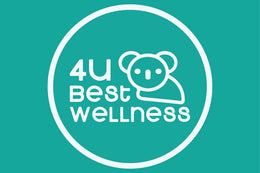Fish oil is a source of omega-3 fatty acids, a type of polyunsaturated fat that supports health and wellbeing. As the name suggests, fish oil is found in and sourced from fish, but some varieties of fish contain larger amounts of healthy fat than others. So how much should you aim to consume each day? What are the best sources? What are the health perks? And, importantly, what can you do if you don’t eat fish?
What are the benefits of fish oil?
Fish oil contains two particular types of omega-3 fatty acids, called eicosapentaenoic acid (EPA) and docosahexaenoic acid (DHA) which assist in maintaining heart, skin, eye and brain health.
Blackmores Fish Oil 1000 Odourless provides a high-quality natural source of omega-3. It contains 300 mg of omega-3 per capsule to maintain heart, skin, eye and brain health and is ideal if you don’t eat fish 2-3 times per week.

EPA and DHA also help to support brain health and cognitive function when consumed in higher quantities. Blackmores Omega Brain provides four times the amount of DHA per capsule than our standard fish oil capsule* to maintain brain health and mental function. *Blackmores standard fish oil capsule contains 180 mg EPA and 120 mg DHA.

While the body can produce very small amounts of EPA and DHA from another type of omega-3 called alpha-linolenic acid (ALA), a diet rich in healthy fatty acids is important to ensure adequate intake. So, if you don’t eat fish two or three times a week, you may consider a fish oil supplement.
Is fresh fish the best source of dietary fish oil?
Not necessarily. In fact, some types of canned fish contain more of the beneficial EPA and DHA omega-3 fatty acids per serve than fresh fish. That’s good news because canned fish is typically cheaper than fresh varieties, which can make eating two to three serves a week more affordable.
Which fish contains the most omega-3s?
When it comes to EPA and DHA content, a good rule of thumb to remember is that the oilier the fish, the better. Oily fish are those that contain at least 10 per cent fat, in the form of the healthy omega-3 oils.
The following quantities of omega-3 fatty acids are all per 150g serve of fish:
- Canned sardines: 1500mg
- Canned salmon: 500-1000mg
- Mussels: 500-1000mg
- Atlantic or Australian salmon: >500mg
- Mackerel: >500mg
- Mullet: >500mg
- Fresh sardines: >500mg
- Canned tuna: 300-500mg
- Snapper: 300-400mg
- Blue-eye trevalla: 300-400mg
- Tuna: 300-400mg
- Barramundi: 200-300mg
- Flathead: 200-300mg
- Prawns: <300mg
Do any other foods contain EPA and DHA?
The best dietary sources of EPA and DHA is through consuming fish but some other foods do contain small amounts of the omega-3 fatty acids. These include beef, lamb and eggs, as well as fish-oil enriched products, which can include margarine, bread and eggs.The levels of omega-3s in these foods is significantly lower than fish and seafood, ranging from just 20mg to 125mg per serve.
Are there any vegetarian and vegan sources of omega-3 fatty acids?
Omega-3 fatty acids are also found in plant-based fats and oils, such as canola and soybean oil, linseeds, chia seeds and walnuts, but they’re slightly different to the variety that fish oil contains.These plant-sourced omega-3s contain those ALAs that you read about earlier, and while they should also be included as part of a healthy well-balanced diet, it’s the EPA and DHA that provides the main health benefits.
How much EPA and DHA omega-3s do you need?
The amount required depends on the desired health benefit, but as a guide, children aged between two and three years ideally need at least 40mg a day, rising to 55mg a day for four- to eight-year-olds. For teenagers, between 70 to 125mg a day is optimal, according to their age and gender. For adults, the Heart Foundation recommends consuming between 250 and 500mg of EPA and DHA every day – or in other words, between 1750 to 3500mg per week. You can achieve this by eating two to three serves of oily fish every week.
However, to help maintain healthy blood fats, consume about 900mg of omega-3s, and to relieve mild joint inflammation consumption of 2700mg per day is necessary. It is possible, although difficult, to consume too many omega-3 fatty acids, and the upper level of intake is set at 3000mg per day. Concerningly, around 80 per cent of Australians aren’t eating or consuming enough fish oil – or at least, not enough to enjoy the health benefits.
Should I be worried about mercury when I eat fish?
According to the Heart Foundation, there are health benefits of eating fish.However, while you should aim to eat two or more fish meals a week, it’s wise to avoid or limit your intake of varieties that are known to be high in mercury.
These include shark (also known as flake), catfish, swordfish, marlin and orange roughy (which is sometimes called deep sea perch). Gemfish, ling and southern bluefin tuna also tend to be higher in mercury than other varieties.
Blackmores fish oil supplements
Blackmores travels the world to ensure the fish oil used in our products is of premium quality and sourced responsibly. We are involved in every step of the supply chain, from selection of the raw ingredients at their source through to the oil extraction and capsule production. We source our fish oil from 100 per cent wild-caught small fish to ensure the best quality fish oil.All Blackmores fish oil products undergo at least 30 quality tests and checks before they make it to the store for sale.



